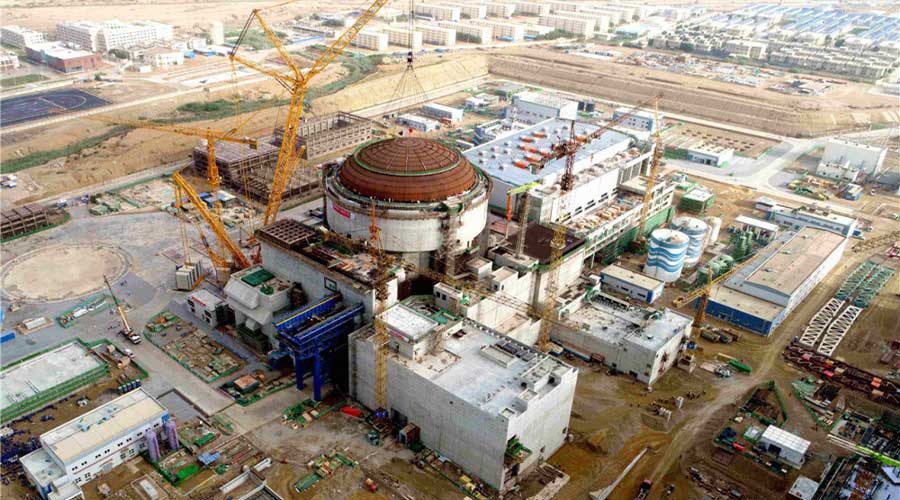Kanupp-2 nuclear reactor using Hualong One technology has successfully completed its thermal testing called Hot Functional Tests (HFT). At the Karachi Nuclear Power Plant (Kanupp) the 1100MW K2 reactor is the first unit using China’s homegrown ‘Hualong One’ technology.
According to the China Global Television Network (CGTN), on 31st August, the outer containment dome of the K3 unit at Kannup was installed and the nuclear power plant’s main structure was completed.
Read more: PAEC KANUPP-2: 1100 megawatts to be added to national grid by December
The all-weather friend of Pakistan, China is building two more Hualong One reactors with a capacity of 1,100MW each at the Karachi Nuclear Power Complex on the coast of the metropolis where a single 137MW reactor unit (Kanupp-1) has been operating since 1972.
There are 6 units currently at home and abroad powered by Hualong One technology which are under construction and their quality and security are highly controlled.
The Hualong One technology used in the Kanupp-2 reactor that completed thermal testing is one of the third-generation nuclear power designs that is also known as HPR1000. It has the highest adequacy in the current nuclear power market.
The Kanupp-2 and Kanupp-3 reactor unit’s construction started in August 2015 and May 2016 with the start of commercial operations scheduled for 2021 and 2022 respectively. These reactors units have 60 years of design life that accounts for around 10 percent of the total generation capacity of Pakistan.
On Sunday, the China National Nuclear Corporation said, “The HFTs play a significant role in the construction of the nuclear power project, simulating the actual operation conditions of the nuclear power plant to verify the reliability of the main equipment and systems under the thermal conditions, before the nuclear reactor is loaded with nuclear fuel.”
Further said, “The success has laid a solid foundation for subsequent major processes, including nuclear fuel loading and grid-connected power generation,” it added. “It is also a comprehensive inspection on the quality of the reactor coolant system equipment, pipeline sealing and welding, as well as the design, manufacture and installation of relevant systems.”
Image source





















